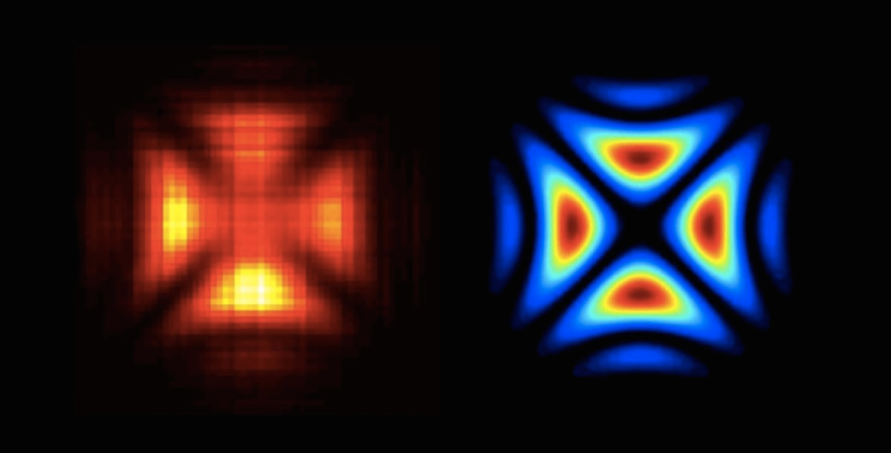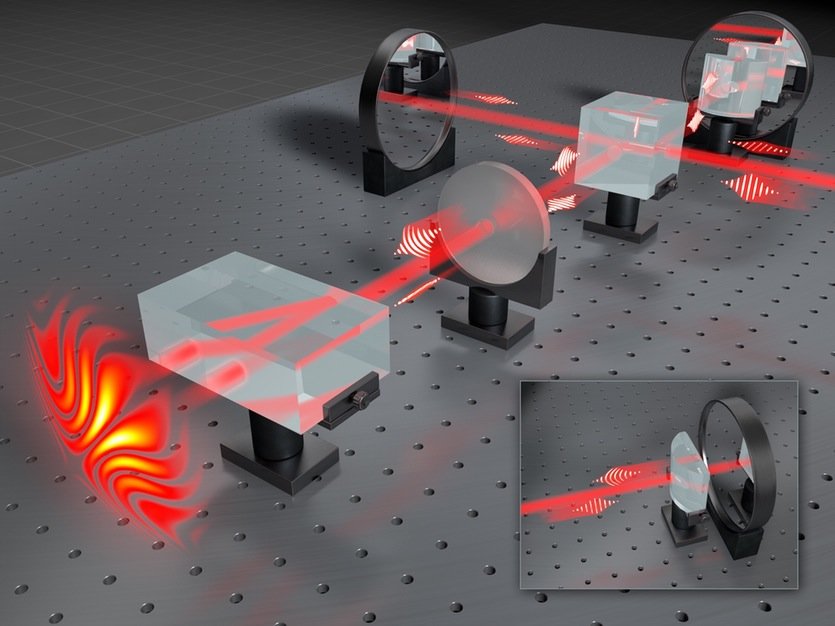
Now, Polish physicists have created the first ever hologram of a single light particle. The feat, achieved by observing the interference of two intersecting light beams, is an important insight into the fundamental quantum nature of light.
The result could also be important for technologies that require an understanding of the shape of single photons - such as quantum communication and quantum computers.
"We performed a relatively simple experiment to measure and view something incredibly difficult to observe: the shape of wavefronts of a single photon," says Radoslaw Chrapkiewicz, a physicist at the University of Warsaw and lead author of the new paper, published in Nature Photonics.
For hundreds of years, physicists have been working to figure out what light is made of. In the 19th century, the debate seemed to be settled by Scottish physicist James Clerk Maxwell's description of light as a wave of electromagnetism.
But things got a bit more complicated at the turn of the 20th century when German physicist Max Planck, then fellow countryman Albert Einstein, showed light was made up of tiny indivisible packets called photons.
In the 1920s, Austrian physicist Erwin Schrödinger elaborated on these ideas with his equation for the quantum wave function to describe what a wave looks like, which has proved incredibly powerful in predicting the results of experiments with photons. But, despite the success of Schrödinger's theory, physicists still debate what the wave function really means.
Now physicists at the University of Warsaw measured, for the first time, the shape described by Schrödinger's equation in a real experiment.
Photons, travelling as waves, can be in step (called having the same phase). If they interact, they produce a bright signal. If they're out of phase, they cancel each other out. It's like sound waves from two speakers producing loud and quiet patches in a room.
The image - which is called a hologram because it holds information on both the photon's shape and phase - was created by firing two light beams at a beamsplitter, made of calcite crystal, at the same time.
The beamsplitter acts a bit like a traffic intersection, where each photon can either pass straight on through or make a turn. The Polish team's experiment hinged on measuring which path each photon took, which depends on the shape of their wave functions.

The team realized that if they knew the wave function of one of the photons, they could figure out the shape of the second from the positions of flashes appearing on a detector.
It's a little like firing two bullets to glance off one another mid-air and using the deflected trajectories to figure our shape of each projectile.
Each run of the experiment produced two flashes on a detector, one for each photon. After more than 2,000 repetitions, a pattern of flashes built up and the team were able to reconstruct the shape of the unknown photon's wave function.
The resulting image looks a bit like a Maltese cross, just like the wave function predicted from Schrödinger's equation. In the arms of the cross, where the photons were in step, the image is bright - and where they weren't, we see darkness.
The experiment brings us "a step closer to understanding what the wave function really is," says Michal Jachura, who co-authored the work, and it could be a new tool for studying the interaction between two photons, on which technologies such as quantum communication and some versions of quantum computing rely.
The researchers also hope to recreate wave functions of more complex quantum objects, such as atoms.
"It's likely that real applications of quantum holography won't appear for a few decades yet," says Konrad Banaszek, who was also part of the team, "but if there's one thing we can be sure of it's that they will be surprising."



Reader Comments
to our Newsletter